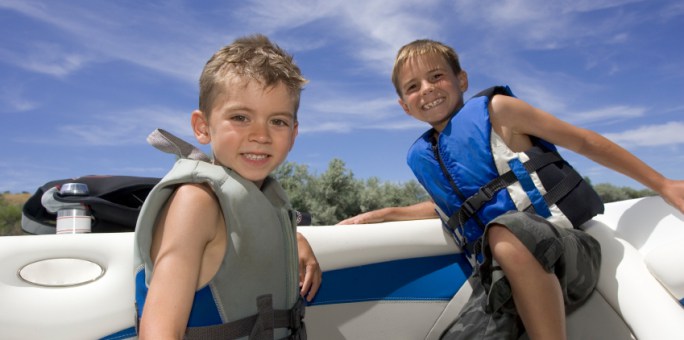
Recreational boating can be fun, but like any activity involving large machinery or vehicles, it can be dangerous if you’re not prepared. In 2015, the United States Coast Guard (USCG) reported 4,158 accidents that resulted in 2,613 injuries. The number of accidents increased 2.3 percent while the number of injuries decreased 2.4 percent when compared to 2014 data.
In all of those accidents, the most common types of vessels involved reported were open motorboats (45 percent), personal watercraft (19 percent), and cabin motorboats (17 percent). Damaged boats and property in 2015 boating accidents was estimated at $41 million, according to the 2015 Recreational Boating Statistics report from the USCG.
Those numbers can be sobering, but by taking some simple steps and exercising proper safety and judgment, some accidents may be avoided.
The Importance of Training
Unlike a vehicle license, boat licenses are commonly given after a written exam only, without an operation test. And in some states, the written exam may not be required. Just because you have a license doesn’t mean you know how to safely operate a boat.
The USCG reports that 71 percent of the most severe accidents in 2015 occurred on boats where the operator did not receive boating safety instruction, while only 15 percent involved vessels where the operator had received a nationally-approved boating safety education certificate.
Fortunately, proper training is not difficult to find. Depending on how close you are to water, it may be as simple as going to a boat school. If that’s not possible, there are many online courses, as well. The National Association of State Boating Law Administrators (NASBLA) provides a list of approved courses and organizations here. Of course, it’s a good idea to check with you local regulatory agency to ensure you are in compliance with all licensing requirements.
Plan: Where Are You Going and When Will You Be Back?
You’ve probably heard of a float plan if you’re a boat owner. A float plan can expedite rescue in the event that you’re unable to send out a distress signal or if you’re in a small vessel without means of communication. The USCG’s website even has a helpful form you can leave ashore to make sure no detail is forgotten.
And, if you’re thinking a float plan is unnecessary if you’re going on a lake or other enclosed body of water, think again: 41.5 percent of accidents happened in lakes, ponds, reservoirs, dams and gravel pits in 2015, says the USCG.
Weather
It’s common sense to check the weather conditions before heading out on the water. “Red sky in the morning, sailor take warning,” right?
Contrary to what you might think, more deaths happened in calm and choppy waters (at most, 2-foot waves) than rougher waves. And according to the USCG’s 2011 report, nearly 73.6 percent of all accidents happened during the day with good visibility.
Regardless of your plans, keep an eye on wind, water and visibility conditions before casting off.
When an Accident Happens, Safety First
We get it. Everyone looks a little ridiculous in a life jacket. Put one on anyway. If you’re a mile from shore, you would have to swim the equivalent distance of approximately 62 lengths in a 25-meter pool…while dealing with a current and waves. If you try to wait for a rescue, you may have to stay afloat for hours until rescue teams arrive. You might want to swallow your pride and pop on a life jacket.
The key to your safety on the water may be how much effort you put into preparation. Consider taking a class and increasing your knowledge. Make a plan and leave a copy with a family member, friend or neighbor. Drinking and operating a boat? Bad idea. Speeding? Bad idea. Having a good time while being safe? Great idea.
Source: https://al.st/2AndYHH

